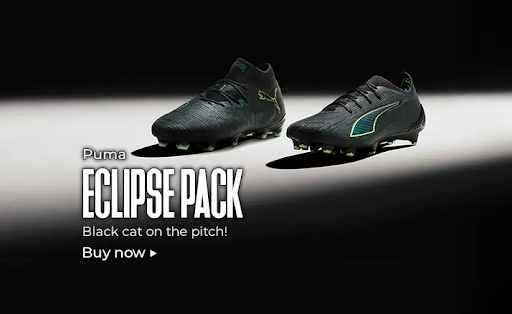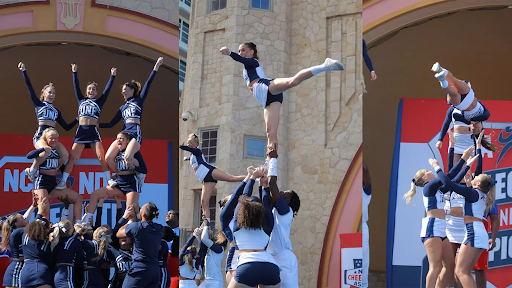Football cleats are one of the most important pieces of equipment for any player on the field. Football cleats help you run faster, change direction quickly, and stay stable while playing. Choosing the right football cleats can make a big difference in your game. There are many types of cleats, like those for firm ground, soft ground, and indoor fields. Each type is designed to give players better grip and comfort during matches. Picking the wrong cleats can lead to slips, injuries, or poor performance. That’s why it’s important to know what to look for when buying football cleats. Comfort, size, fit, and the surface you play on are key points to check. Football cleats also come in different materials like leather and synthetic, each with unique benefits for players.
Wearing the right football cleats improves your performance and protects your feet from injuries. Modern football cleats are made to be light, flexible, and strong so that players can run faster and move easily. When buying football cleats, it is smart to consider your position on the field, how often you play, and the type of ground you usually play on. Some cleats are better for speed, while others are made for strong grip and stability. Football cleats are not only about function; style also matters to many players. They come in various colors and designs to match your personality or team uniform. Caring for football cleats is important too. Cleaning them after every game and storing them properly can increase their life. Understanding the features of football cleats will help you choose the perfect pair and play your best game every time.
Table of Contents
How Football Cleats Affect Your Game Performance
Football cleats play a big role in how well you perform on the field. The right cleats help you run faster, make quick turns, and stop suddenly without slipping. They give your feet extra grip on grass or turf, which is very important during matches. Players who wear ill-fitting or worn-out cleats may feel unstable and even risk injuries like sprained ankles. Football cleats are not just shoes; they are tools that improve your balance and agility. Choosing the right pair can give you confidence, improve your speed, and make it easier to play at your best. Always remember that football cleats are designed to match the type of game you play and the position you play in.
Types of Football Cleats and Their Uses
There are several types of football cleats made for different surfaces and conditions. Firm ground cleats are the most common and work well on dry grass. Soft ground cleats have longer studs for muddy fields, which prevent slipping. Turf cleats are small and short, designed for artificial grass fields. Indoor cleats have flat soles and are used on hard floors inside gyms. Each type gives you better performance if used in the right condition. Using the wrong cleats can reduce your speed, stability, and control. Knowing which type fits your playing style and field type is very important to avoid injuries and play comfortably.
How to Choose the Right Football Cleats for Your Feet
Choosing football cleats is not only about style or brand. You need to focus on comfort, fit, and support. Your cleats should match the size of your feet perfectly. If they are too tight, you can get blisters; if they are too loose, your foot can slide inside and cause injuries. Try the cleats with the socks you usually wear during games. Also, check the arch support and cushioning. Some cleats are designed for players with high arches, while others are better for flat feet. Always try walking and running in the cleats before buying to make sure they feel comfortable.
Football Cleats for Different Playing Surfaces
Different football fields need different cleats. Firm grass needs cleats with medium studs for grip. Muddy or wet grass needs soft ground cleats with longer studs. Artificial turf is tough, so turf cleats with small rubber studs work best. Indoor floors need cleats with flat soles to prevent slipping. Choosing the wrong cleats for a surface can make it hard to move and increase the risk of injury. Always know where you usually play and pick cleats that match that surface for the best performance.
Top Materials Used in Football Cleats
Football cleats are made from leather, synthetic materials, or a mix of both. Leather cleats are strong, durable, and provide comfort but can be heavier. Synthetic cleats are lighter and easier to clean, but sometimes less durable. Modern cleats use lightweight synthetic materials to make players faster. Some cleats have mesh for breathability and extra comfort. Choosing the right material depends on your playing style, how often you play, and your budget. Proper maintenance also matters to make them last longer.
Tips to Break in and Maintain Your Football Cleats
New football cleats can feel stiff, so breaking them in is important. Wear them for short practice sessions first. This helps your feet adjust without blisters. Stretching the cleats and using special socks can also help. Cleaning cleats after every game removes dirt and mud. Store them in a dry place to prevent damage and bad smell. Regular maintenance improves their performance and extends their life. Well-maintained football cleats help you play comfortably and avoid injuries.
Football Cleats for Speed vs. Stability: Which One to Pick
Some football cleats are designed for speed. They are lightweight, with a snug fit for faster running. Others focus on stability, with extra support and stronger studs for control. Your choice depends on your playing style. If you are a forward who needs to run fast, lightweight speed cleats are better. If you are a defender who needs balance and strong grip, stability cleats are ideal. Understanding the difference helps you choose cleats that improve your performance.
Common Mistakes to Avoid When Buying Football Cleats
Many players make mistakes when buying football cleats. Some choose the wrong size, which causes discomfort or injuries. Others pick cleats just because of style or brand without thinking about the surface or type of play. Buying cheap or low-quality cleats can also be a problem, as they wear out quickly. Always check the fit, material, type, and purpose before buying. Avoid rushing the purchase; trying different cleats in a store or reading reviews online helps you make the right choice.
Conclusion
Football cleats are more than just shoes. They are essential tools that improve speed, balance, and performance on the field. Choosing the right cleats depends on your foot size, playing surface, position, and style. Proper maintenance, cleaning, and care can increase the life of your cleats. Whether you play for fun or professionally, investing time in picking the right football cleats makes your game safer and more enjoyable. Always focus on comfort, grip, and support to play your best every time.
FAQs
Q1: How often should I replace my football cleats?
A1: Replace cleats if the studs are worn, the sole is damaged, or they feel uncomfortable. Usually, 1–2 years for regular players.
Q2: Can I wear football cleats on different surfaces?
A2: It’s better to use cleats designed for the specific surface to prevent slipping and injuries.
Q3: Should I buy leather or synthetic cleats?
A3: Leather is durable and comfortable; synthetic is lighter and easier to clean. Choose based on preference and budget.




